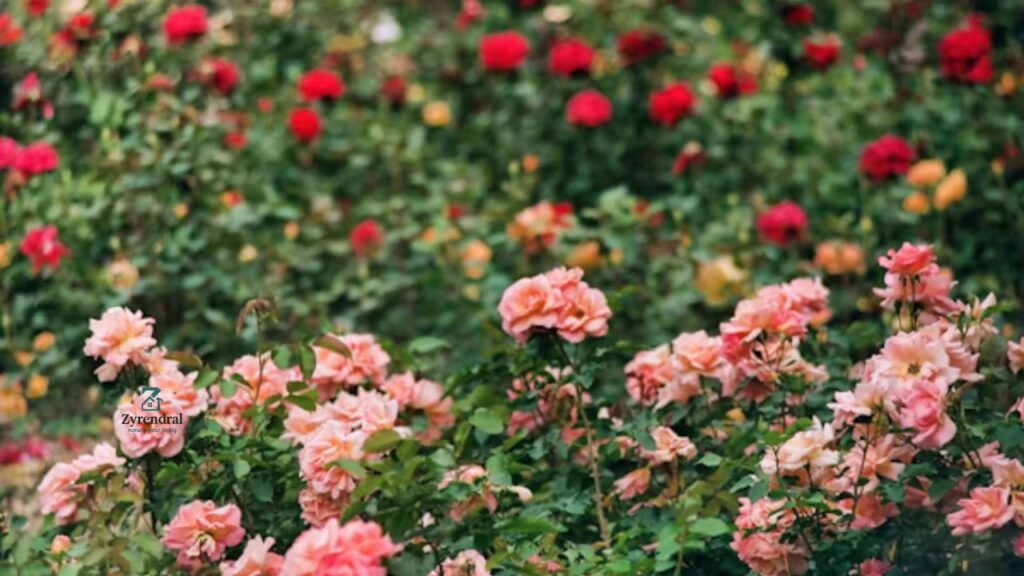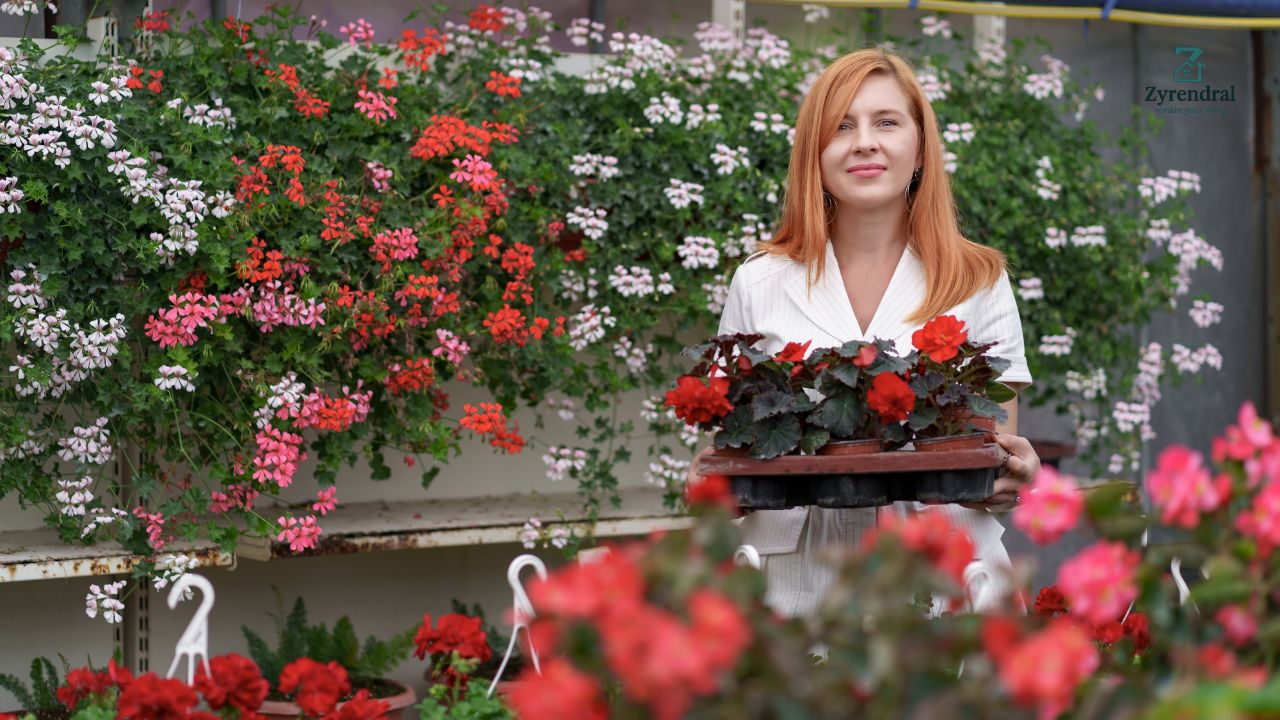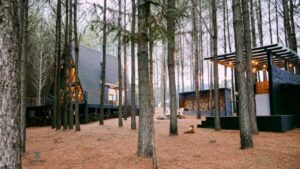When it comes to crafting stunning gardens or accenting outdoor spaces, landscape roses lead the way. These versatile blooms aren’t just beautiful—they’re also hardy and easy to care for, making them a favorite for gardeners of all experience levels. Whether you’re looking to create a lush front yard display or add a touch of elegance to your backyard, landscape roses provide endless possibilities.
Table of Contents
ToggleQuick Facts About Landscape Roses
Before we dive into planting and care tips, here’s an overview of key details about landscape roses to help you decide how they fit into your garden plans:
| Feature | Details |
|---|---|
| Common Types | Drift roses, knockout roses, carpet roses, shrub roses |
| Care Level | Low to moderate |
| Sunlight Needs | Full sun (6–8 hours per day) |
| Best Uses in Landscaping | Borders, ground cover, hedges, accent plants |
| Bloom Time | Spring through fall (some reblooming varieties available) |
| Hardiness Zones | USDA zones 4–11 (varies by variety) |
| Ideal Soil | Well-draining soil with a slightly acidic pH (6.0–6.5) |
| Popular Varieties | Coral Drift®, Sunny Knock Out®, and Oso Easy® series |
| Average Cost | $15–$40 per plant (depending on size and variety) |
Now that you know the basics, let’s explore how to plant, grow, and care for these gorgeous blooms.
Why Choose Landscape Roses for Your Garden?

Landscape roses have earned their spot in millions of gardens worldwide. Here’s why:
- Hardiness: These roses are bred to resist disease, pests, and extreme weather.
- Low Maintenance: Unlike traditional hybrid teas, landscape roses rarely require special pruning or constant spraying.
- Versatility: Use them as ground cover, hedges, or statement plants to instantly elevate your garden.
- Continuous Blooms: Many varieties bloom multiple times a year, ensuring vibrant color year-round.
- Wide Selection: With options like red, yellow, pink, and white blossoms, they can match any landscape design.
How to Plant Landscape Roses
Key Tips for Planting Landscape Roses
Planting your roses the right way lays a strong foundation for their growth. Follow these steps to get started:
1. Choose the Right Spot
Landscape roses thrive in spaces with 6–8 hours of direct sunlight daily. Select a well-draining location and avoid areas prone to water pooling, as this can lead to root rot.
2. Prepare the Soil
- Test your soil to ensure a slightly acidic pH between 6.0 and 6.5.
- Amend clay-heavy soil by mixing in compost or sand to improve drainage.
- For sandy areas, enrich the soil with organic matter to retain moisture.
3. Plant at the Right Depth
- Dig a hole about twice as wide and as deep as the rose’s root ball.
- Position the plant so that the crown (where stems join the roots) is at, or slightly above, ground level.
- Backfill with the prepared soil, gently patting it down to remove air pockets.
4. Water Thoroughly
Immediately after planting, water the rose deeply to help it establish roots. Maintain consistent moisture in the first four weeks.
Pro Tip:
User reviews and anecdotal experiences highlight that planting in cooler parts of the day, like early morning, reduces transplant shock. A review from Heather in California notes, “I planted Drift Roses at sunrise—no wilt, and they bloomed beautifully within weeks!”
Caring for Landscape Roses
Best Practices for Healthy, Vibrant Roses
Landscape roses require minimal upkeep, but consistent care ensures they thrive. Here’s a breakdown:
1. Watering
- Water about 1 inch per week, depending on climate.
- Use a soaker hose or drip irrigation to target roots directly and prevent fungal diseases.
2. Fertilizing
- Feed roses with a balanced, slow-release fertilizer in early spring.
- Repeat feeding after each bloom cycle to promote continuous growth. Consider organic options for long-term soil health.
3. Pruning
- Minimal pruning is needed for landscape roses.
- Remove dead or damaged canes during early spring.
- Use bypass pruners for clean cuts that heal quickly.
User feedback on pruning is overwhelmingly positive—Matt from Oregon shares, “I trimmed my Knock Out Roses by 30% in early March. Come May, they exploded with blooms!”
Landscape Rose Design Ideas

Creative Landscaping Uses
Landscape roses are highly adaptable. Here are some inspiring ideas to seamlessly integrate them into your garden:
- Low-Maintenance Ground Cover
Drift Roses like Coral Drift® are excellent for covering bare patches and controlling weeds.
- Vibrant Hedges or Borders
Create stunning boundaries with Knock Out Roses, which grow compact and dense.
- Mixed Flower Beds
Pair roses with companion plants like lavender or salvia for a cottage-garden vibe.
- Showpiece Containers
Plant compact varieties like Oso Easy® in decorative pots to bring color to patios or entryways.
Common Questions About Landscape Roses
FAQs
Q1. How often should I deadhead landscape roses?
A. While not strictly necessary, occasional deadheading promotes quicker reblooms.
Q2. Can I grow landscape roses in containers?
A. Yes! Just ensure the pot has good drainage and use high-quality soil. Choose compact varieties like Petite Knock Out® for best results.
Q3. Are landscape roses safe for pet-friendly yards?
A. Most roses pose no harm, but be cautious of thorny stems that might cause minor injuries.
Q4. Can I mix landscape roses with other flowers in landscaping?
A. Absolutely. They pair well with hydrangeas, boxwood, and even ornamental grasses.
Final Thoughts
Landscape roses combine beauty, resilience, and functionality. Whether you’re a novice or seasoned gardener, these adaptable plants bring life to any outdoor space. Follow the steps above to plant, grow, and care for your roses, and enjoy a garden that blooms effortlessly throughout the seasons.
Admin Recommendations
Discover Zyrendral’s Hidden Magic: A Traveler’s Paradise







